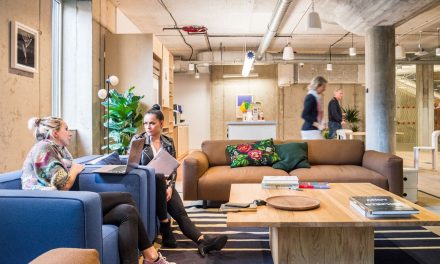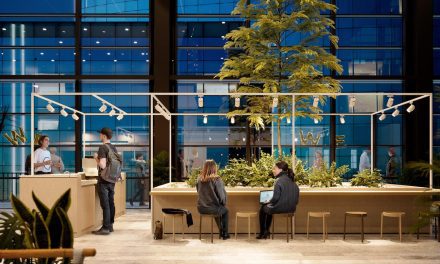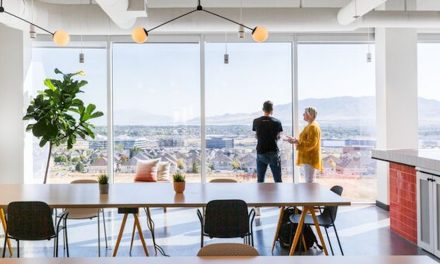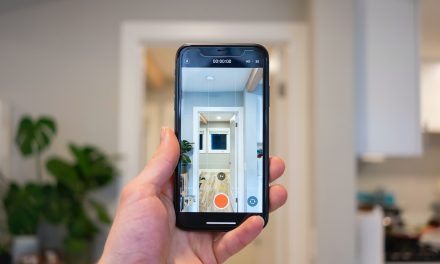The dream of every coworking space operator is a bustling hub with every desk and meeting room booked solid. But the reality can be a bit more…complex. It’s a puzzle many coworking operators grapple with.
Interestingly, a 2024 study by Deskmag found that coworking spaces larger than 500 square meters have an average occupancy rate of about 75%. In contrast, just under half of the capacity in smaller locations is vacant. That’s a significant chunk of potential revenue and vibrancy left untapped.
So, how do you transform your space from a ghost town to a thriving community? In this article, we’ll explore practical, actionable strategies to help you optimize your space, attract members, and boost occupancy rates.
Understanding Occupancy Rates
Simply put, your occupancy rate is the percentage of your available workspace that’s actually being used at any given time. It’s a crucial metric that gives you a snapshot of how effectively you’re utilizing your space and how healthy your business is.
Think of it like this: if you have 100 desks and 60 are occupied on average, your occupancy rate is 60%. Easy, right? You can calculate this for desks, meeting rooms, or your entire space as a whole.
Why should you care about tracking occupancy? Because it’s your business compass. Tracking occupancy rates helps you:
– Gauge your financial health: Low occupancy can signal trouble, while consistently high occupancy means you might need to expand or adjust your pricing.
– Optimize pricing: Knowing your peak demand times can help you set competitive rates and potentially offer discounts during slower periods.
– Improve resource allocation: Are your meeting rooms always booked, while your phone booths sit empty? Occupancy data can guide you in reconfiguring your space or adjusting your offerings.
– Make data-driven decisions: Instead of relying on gut feelings, you can use concrete data to inform your marketing strategies, membership plans, and overall business strategy. For example, if you notice a surge in demand for hot desks on Tuesdays and Wednesdays, you might consider offering a special “two-day pass.”
– Attract investors: Solid occupancy rates are a powerful signal of a successful coworking space, making your business more attractive to potential investors.
Strategies for Optimizing Occupancy Rates
1. Flexible Space Design
Traditional office setups are often rigid and inefficient. Coworking spaces, on the other hand, thrive on adaptability. The key is to create a space that can easily transform to accommodate different work styles and group sizes.
Consider furniture that can be easily rearranged or reconfigured. Modular desks, stackable chairs, and mobile partitions can be quickly adjusted to create larger collaborative areas or smaller, more private workspaces. This flexibility allows you to cater to a diverse membership base, from solo entrepreneurs to teams needing project space.
– Creating Multi-Functional Spaces
Every area in your coworking space should pull its weight. Multi-functional spaces are your secret weapon for maximizing utilization. A large room can serve as a presentation space in the morning, a workshop area in the afternoon, and even a social event venue in the evening.
Think about how you can combine different uses within a single space. For example, a lounge area with comfortable seating can also function as an informal meeting spot. A well-designed kitchen can become a hub for networking events after hours. The more uses you can get out of a single space, the higher your overall utilization rate will be.
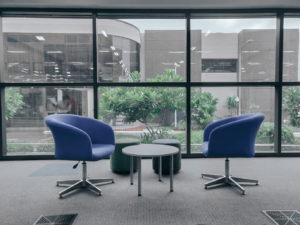
Examples of Successful Flexible Space Designs
Let’s look at some real-world examples:
- Hot Desks with Wheels: Desks on wheels can be easily moved to create different configurations. They can be clustered together for team collaboration or spread out for individual work.
- Modular Meeting Rooms: Meeting rooms with movable walls or partitions can be adjusted in size to accommodate different group sizes. This allows you to maximize the use of your meeting room space and avoid having a large room sitting empty when only a small group needs to meet.
- Convertible Lounge Areas: Lounge areas with comfortable sofas and armchairs can also be used for informal meetings or brainstorming sessions. Adding a few small tables can make the space even more functional.
- Phone Booths with Dual Functionality: Soundproof phone booths are essential for focused work, but they can also be designed to double as video conferencing rooms with the right equipment.
- Outdoor Workspaces: If you have outdoor space, consider creating a patio or garden area where members can work in the fresh air. This can be a particularly attractive feature during warmer months and adds another dimension to your coworking offering.
Further read: Steps for Designing a People-Centric Workspace
2. Effective Pricing Strategies
Your pricing strategy is a powerful lever for influencing occupancy. It’s not just about setting a number; it’s about creating a pricing structure that attracts members, maximizes revenue, and reflects the value you offer.
Dynamic Pricing Models Based on Demand
Gone are the days of one-size-fits-all pricing. Dynamic pricing, also known as demand-based pricing, allows you to adjust your rates based on factors like time of day, day of the week, or even seasonal demand.
For example, you might offer lower rates for hot desks during off-peak hours or weekends, incentivizing members to use the space when it’s less busy. Conversely, you could charge a premium for meeting rooms during peak times. Dynamic pricing helps you optimize revenue by capturing higher prices when demand is high and attracting more members during slower periods.

Membership Tiers and Packages
Offering a variety of membership tiers and packages allows you to cater to different needs and budgets. This not only broadens your appeal but also encourages members to upgrade to higher tiers as their needs evolve.
Here are some common membership models:
- Hot Desk: The most basic option, ideal for freelancers and those who need a flexible workspace without a dedicated desk.
- Dedicated Desk: Provides a permanent desk for members who prefer a consistent workspace.
- Private Office: Offers a private, lockable office for individuals or teams.
- Team Packages: Discounted rates for groups of employees from the same company.
- Virtual Office: Provides a business address and mail handling services without physical workspace.
Within each tier, you can offer different packages with varying levels of access and amenities. For example, a “Hot Desk Plus” package might include access to meeting rooms or printing services.
The Value of Free Trials and Promotions
Free trials and promotions are excellent tools for attracting new members and filling your space. They allow potential members to experience your coworking space firsthand and see the value you offer.
Consider offering:
- Day Passes: Allow potential members to try out your space for a day.
- Week Trials: Give a more extended taste of the coworking experience.
- Introductory Discounts: Offer a discounted rate for the first month or a limited time.
- Referral Programs: Reward existing members for referring new members.
- Partnerships: Collaborate with local businesses to offer special deals to their customers.
3. Easy Booking and Management Systems
In today’s fast-paced world, convenience is king. A smooth and efficient booking system is essential for attracting and retaining members, and ultimately, maximizing your occupancy rates. Nobody wants to wrestle with a clunky platform or make phone calls to book a desk.
The Importance of User-Friendly Booking Platforms
Think of your booking system as the front door to your coworking space. If it’s difficult to navigate or use, potential members might simply walk away. A user-friendly platform should be intuitive, easy to understand, and require minimal effort to book a desk, meeting room, or other resource.
Key features of a great booking platform include:
- Clear and concise information: Availability, pricing, and amenities should be clearly displayed.
- Simple booking process: Booking should be quick and easy, ideally with just a few clicks.
- Secure payment options: Offer a variety of secure payment methods to make it easy for members to pay.
- Automated confirmations and reminders: Reduce no-shows with automated booking confirmations and reminders.
Online Calendars and Real-Time Availability
Real-time availability is crucial. Members should be able to see at a glance what resources are available and book them instantly. Online calendars and meeting room displays provide a visual representation of your space’s availability, making it easy for members to plan their work schedule.
Integrating your booking system with your online calendar ensures that availability is always up-to-date. This eliminates double bookings and prevents frustration for your members.
Mobile Apps for On-the-Go Bookings
In today’s mobile-first world, having a mobile app for your booking system is a must. A mobile app allows members to book resources from anywhere, at any time. Whether they’re on the train, in a meeting, or simply on the go, they can easily check availability and make a booking with their smartphone.
A well-designed mobile app can significantly improve the booking experience and encourage more frequent use of your coworking space. Consider features like:
- Push notifications: Send reminders about upcoming bookings or special offers.
- Easy access to account information: Allow members to manage their bookings and payment information from their phone.
- Integration with other apps: Connect your app with other productivity tools such as calendar and access control apps to streamline the workflow for your members.
4. Enhanced Amenities and Services
In the competitive world of coworking, simply offering a desk and Wi-Fi isn’t enough. To truly stand out and attract members, you need to curate a compelling package of amenities and services that cater to their needs and enhance their work experience.
Attracting Members with Valuable Amenities
Think beyond the basics. What can you offer that will make your coworking space the go-to choice for professionals in your area? Consider amenities that add value to their workday, foster productivity, and create a sense of community.

Here are some popular and effective options:
- High-speed internet: Reliable and fast internet is non-negotiable.
- Meeting rooms: Well-equipped meeting rooms are essential for client presentations, team meetings, and private calls.
- Printing and scanning: Provide easy access to printing and scanning services.
- Kitchen and break area: A well-stocked kitchen with coffee, tea, and snacks can make a big difference.
- Phone booths: Private phone booths offer a quiet space for calls and focused work.
- Comfortable furniture: Ergonomic chairs and spacious desks contribute to a comfortable and productive work environment.
- 24/7 access: Offering 24/7 access can be a major draw for freelancers and those with flexible schedules.
- Showers: Showers can be a valuable amenity, especially for cyclists or those who work out during their lunch break.
Personalized Services and Member Benefits
Going the extra mile with personalized services can set you apart. Consider offering:
- Mail handling: A business address and mail handling services can be attractive to freelancers and small businesses.
- Reception services: A friendly receptionist can greet guests and create a professional impression.
- Networking events: Organize regular networking events to connect members and foster a sense of community.
- Workshops and training: Offer workshops and training sessions on relevant topics to add value for your members.
- Discounts and partnerships: Partner with local businesses to offer discounts to your members.
The Role of Community Events and Networking Opportunities
A thriving coworking space is more than just a place to work; it’s a community. Organizing regular events and networking opportunities is crucial for creating a sense of belonging and encouraging interaction among members.
Consider hosting:
- Social gatherings: Casual get-togethers, happy hours, or holiday parties can help members connect on a personal level.
- Workshops and seminars: Invite industry experts to share their knowledge and provide valuable learning opportunities.
- Lunch and learns: Host informal lunch sessions where members can share their expertise or discuss industry trends.
- Community projects: Organize volunteer events or support local charities to create a sense of purpose and give back to the community.
5. Strategic Floor Planning
The layout of your coworking space plays a huge role in how efficiently it’s used and how appealing it is to potential members. Strategic floor planning is all about maximizing every square foot, creating a comfortable flow, and fostering a productive atmosphere.
Optimizing Space Layout for Maximum Efficiency
Think of your coworking space as a well-oiled machine. Every area should have a purpose and contribute to the overall functionality. Avoid wasted space and aim for a layout that promotes interaction and collaboration while still offering areas for focused work.

Consider these points:
- Mix of workspace types: Offer a variety of workspace options, including hot desks, dedicated desks, private offices, and meeting rooms, to cater to different needs.
- Zoning: Create distinct zones for different activities. A quiet zone for focused work, a collaborative zone for teamwork, and a social zone for networking and breaks.
- Traffic flow: Ensure easy and natural movement between different areas. Avoid bottlenecks and create clear pathways.
- Accessibility: Make sure your space is accessible to everyone, including those with disabilities.
Considering Traffic Flow and Natural Light
A well-planned traffic flow can significantly impact the overall experience in your coworking space. Members should be able to move around easily without bumping into each other or disrupting those who are working.
Natural light is another crucial element. It’s proven to boost mood, productivity, and overall well-being. Maximize the use of natural light by positioning desks and workspaces near windows. If natural light is limited, invest in good quality artificial lighting that mimics natural daylight.
Creating Visually-Appealing and Functional Spaces
Aesthetics matter. Your coworking space should be visually appealing and create a positive first impression. Consider the overall design style, color palette, and furniture choices. The space should feel professional, welcoming, and inspiring.
Here are some tips for creating visually appealing and functional spaces:
- Use a consistent design theme: Create a cohesive look and feel throughout the space.
- Choose comfortable and stylish furniture: Invest in furniture that is both functional and aesthetically pleasing.
- Add pops of color: Use color strategically to create visual interest and define different zones.
- Incorporate plants: Plants can add a touch of nature and improve air quality.
- Pay attention to details: Small details like artwork, lighting, and signage can make a big difference.
6. Data-Driven Decision Making
In the world of coworking, gut feelings aren’t enough. To truly maximize your occupancy rates, you need to embrace a data-driven approach. This means using occupancy analytics to understand how your space is being used and making informed decisions based on those insights.
Utilizing Occupancy Analytics to Identify Trends
Occupancy analytics tools provide a wealth of data that can reveal valuable trends about your space usage. By analyzing this data, you can identify:
- Peak hours and days: When is your space busiest? This information can help you adjust staffing, schedule events, or optimize pricing.
- Underutilized areas: Are there parts of your space that are consistently underused? This could indicate a need to reconfigure the layout or offer different amenities in those areas.
- Popular resources: Which resources are most in demand? This can help you prioritize investments and ensure you have enough of what your members need.
- Member behavior: How do members use your space? Understanding their patterns can help you tailor your services and offerings to better meet their needs.
Making Informed Decisions Based on Data
Once you’ve identified trends, you can use this information to make informed decisions about your coworking space. For example:
- Adjust your pricing: If you notice that your space is consistently busy on Tuesdays and Wednesdays, you might consider offering a “two-day pass” or adjusting your pricing for those days.
- Optimize your layout: If you identify underutilized areas, you can reconfigure the space to better meet the needs of your members. Perhaps those individual phone booths could be converted into a larger meeting room.
- Improve your amenities: If your data shows that meeting rooms are always booked, you might consider investing in more meeting room space or upgrading the technology in your existing meeting rooms.
- Refine your marketing strategies: Understanding your peak hours and days can help you target your marketing efforts more effectively. You might want to run promotions during slower periods to attract more members.
Implementing Changes to Improve Utilization
Data is only valuable if you act on it. Once you’ve made decisions based on your analysis, it’s important to implement changes and track their impact. For example, if you decide to reconfigure your space, monitor the occupancy rates in the affected areas to see if the changes have had a positive effect.
Takeaway
So, maximizing your coworking space is an ongoing adventure, not a quick fix. We’ve talked about everything from flexible layouts and smart pricing to using data and building community—these are your go-to tools. The coworking world is changing fast, with cool new stuff like AI-powered management and blended virtual/physical spaces popping up.
If you focus on creating a valuable, flexible, and friendly community, you’ll not only fill your space now but also be ready for what’s next. It’s all about creating a place where people connect and do great things – and that’s a goal worth going after!






